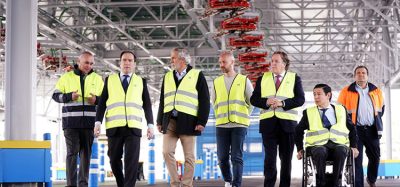Moovit partners with Uber to add trip-planning options to app
- Like
- Digg
- Del
- Tumblr
- VKontakte
- Buffer
- Love This
- Odnoklassniki
- Meneame
- Blogger
- Amazon
- Yahoo Mail
- Gmail
- AOL
- Newsvine
- HackerNews
- Evernote
- MySpace
- Mail.ru
- Viadeo
- Line
- Comments
- Yummly
- SMS
- Viber
- Telegram
- Subscribe
- Skype
- Facebook Messenger
- Kakao
- LiveJournal
- Yammer
- Edgar
- Fintel
- Mix
- Instapaper
- Copy Link
Posted: 4 February 2019 | Intelligent Transport | No comments yet
Uber users will find real-time information and step-by-step directions powered by Moovit in the app, alongside other available transportation options.


Moovit has partnered with Uber with the aim to provide transit APIs for Uber app’s new integration with public transport.
Moovit co-Founder and CEO, Nir Erez, said: “Uber is a visionary company that has fundamentally changed how people access mobility in cities around the world. Moovit is proud to partner with Uber as it is expands its consumer offering and adds transit trip-planning options to its app.”
Moovit owns and operates data from more than 7,000 transit agencies, which is increased with data from Moovit’s community of users. With more than 350 million users, its free urban mobility app provides full multi-modal transit options in more than 2,700 cities in 88 countries.
“We’re thrilled to be working with Moovit to enable real-time data and route planning in the Uber app,” said David Reich, Head of Transit at Uber. “As Uber moves towards becoming a one-stop shop for transportation in a city, Moovit’s global footprint will enable us to offer a transit integration around the world.”
Uber is launching its transit integration in Denver with plans to expand to other cities in the coming months. Riders can plan their transit journey with real-time information and step-by-step directions powered by Moovit in the Uber app. Once a rider enters their destination, they’ll be able to view available transit routes that will get them to their destination, along with departure and travel times, and receive walking directions to/from stations.
“Moovit’s mission is to simplify urban mobility all around the world and we want to be part of every urban ride in the next few years,” Erez said. “That means partnering with other global urban mobility leaders like Uber, as well as owning and managing our own Mobility-as-a-Service (MaaS) platform that we license to cities, municipalities and transit agencies around the world.”
Related topics
Multimodality, Passenger Experience, Travel & Passenger Information
Related people
David Reich, Nir Erez








